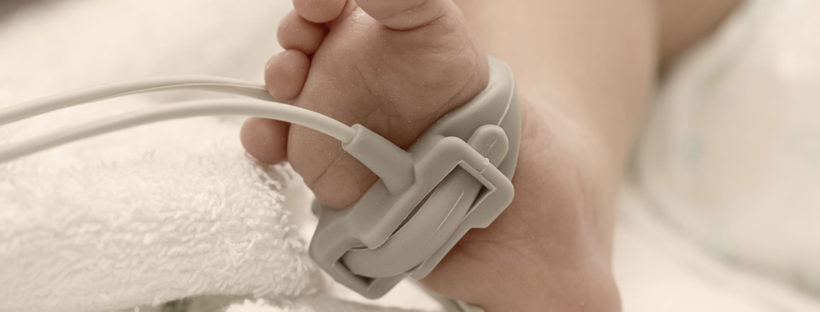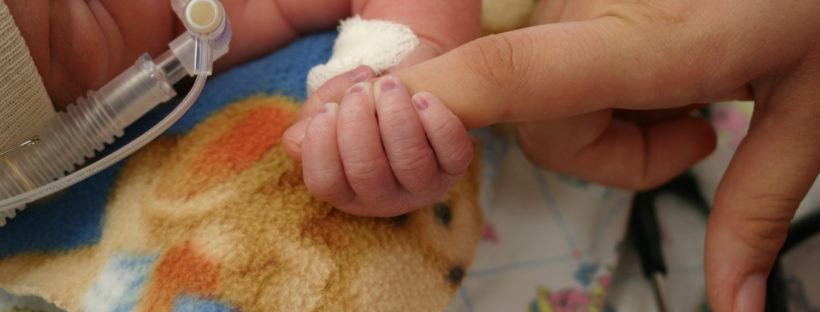by, Summer Hunt
You’ve heard it time and again: Breast is the best. But many moms-to-be express concerns over breastfeeding, from doubts about their abilities, to time constraints, and everything in between. However, moms who have experienced challenges and broken down breastfeeding barriers will tell you this—it’s worth it.
Same goal, different struggles

Pictured above: Erin and Hung Lee with Emersyn, Paxten and Mylo
Pictured above: Erin and Hung Lee with Emersyn, Paxten and Mylo
“Just because something is natural doesn’t always equal easy,” says Erin Lee, RN, BSN, IBCLC, mother of three. As a registered nurse (and now a board-certified lactation consultant), she was fully aware of all the benefits and knew that she would breastfeed. What she couldn’t predict, though, was how many bumps in the road she would encounter.
“I had a long intense labor, and they had to use some suction to get my daughter out,” she explains. “She had a strong oral aversion, and I had flat nipples, which made latching almost impossible. On top of everything else, she was extremely jaundiced. I wanted and needed to breastfeed her, and I was determined to—but it wasn’t easy to get started.”
Lindsey Grissett knew before her daughter was born that she would breastfeed. “It was just something that made enough sense to me not to question,” she says. “I was further encouraged to educate myself on it by both my doctor and my husband.” Birthing at a Baby-Friendly® hospital meant Lindsey had a lot of support. “I was signed up for breastfeeding classes well in advance, and I don’t think I had a single question go unanswered,” she says. “I felt both mentally and physically prepared.” Shortly after giving birth, baby Emma latched right on as both mom and baby got the hang of things.
Breastfeeding wasn’t without its challenges for Lindsey, though. “There were times when I would stand in the shower, stare at the wall, and wonder how it was possible for an individual to function on so little sleep,” she recalls. It felt like the baby was hungry all the time… I was exhausted.” Lindsey learned a lesson in patience and teamwork as mom and baby found their rhythm. “It’s a process—you have to use different hand movements, massaging your breast to get the milk flowing while trying to get her mouth in the right place… or else all that hard work literally just leaks away.”
Finding help when you need it
For Erin, having the support of an International Board Certified Lactation Consultant® (IBCLC) made it easier to focus on one thing at a time. “Even though I’m a nurse, she saw things I couldn’t see,” Erin says. “She realized my daughter was jaundiced. She also helped me establish smaller goals instead of worrying about getting her to latch. I pumped my milk so we could focus on feeding her and getting her to gain weight. Then we worked on overcoming her oral aversion, and then… she latched!”

Pictured above: Lindsey and Raymond Grissett with Emma
Lindsey agrees that a lactation consultant was a huge help. “They called a few days after being discharged, asking if everything was going okay. They set up appointments for me to come in, show them my progress, and make sure she was taking in enough.” It was a lactation consultant who recognized that Lindsey’s baby girl was also jaundiced, she adds. “Several months after I had Emma, I still received phone calls to see how I was doing. I was so well taken care of!”
An indescribable feeling
While you can read a bundle on the benefits of breast milk, there’s one thing that you can’t find in a class or a book—the physical and emotional closeness that develops between mom and baby. “The bond you feel while you’re feeding your baby… it’s incredible,” Erin says. “Until you experience it, you can’t know how powerful it is.”
“The most valuable thing about breastfeeding was definitely how close it brought me to Emma,” Lindsey says. “There so many times when I just wanted to sleep, or eat, or shower in peace… but even when I was at the end of my rope, it was such a great feeling knowing that she needed me. That was my motivation to keep going.”
Turning lemons into… breast milk?
After a difficult breastfeeding journey, Erin knew she could use her experience to help other women. “I was working in pediatrician’s office, and I shadowed the IBCLC there, seeing the moms and babies come in, some of them having the same issues I did. I wanted to help them overcome it—I became very passionate about it.” She became an IBCLC in 2013, and in 2015 she cofounded a private practice lactation business.
“Most people will encounter some sort of struggle,” she says. “For some it might be a few days or weeks, others might take months to get the hang of it. Just because the baby doesn’t latch right away, or you have a little discomfort at first doesn’t mean it’s the end. With the right support system, you can do it. It’s so empowering—being able to provide this essential need for your baby.”
For first-time moms (or first-time breastfeeding moms), Erin offers up this advice:
Educate yourself. Not just about the basics of breastfeeding, but also on normal infant development. The more you know, the more prepared you’ll be for what’s to come.
Build a support system. Find a health care provider that’s supportive of breastfeeding and understands that it’s something you want. Find an IBCLC, and attend La Leche League meetings even before you give birth. Talk to your mom if she breastfed, or your friends who did – these are the people you’ll be texting at 1am when you’re at your wit’s end and you need someone to tell you it’s going to be okay.
Be gentle with yourself. Your only job right now is to nourish your baby. The rest of it, cleaning the house, putting dinner on the table, losing baby weight… it can wait. You take care of your baby—everything else will fall into place.

Summer Hunt is the editorial coordinator for publications at AWHONN.
Resources for Moms
Ask Our Nurses: How Will My Baby and I Begin Breastfeeding? (video)
Ask Our Nurses: How Do I Prepare For Breastfeeding? (video)
How to Overcome the Challenges of Breastfeeding (article)
Breastfeeding Fixes (article)
Download our brand-new Breastfeeding Parent Pages here.
Erin Lee, RN, BSN, IBCLC has worked as a registered nurse in the Pediatric Intensive Care Unit at Boston Children’s Hospital, Georgetown University Hospital and All Children’s Hospital, among others. She is the cofounder of Suncoast Lactation Consultants in Bradenton, FL, where she lives with her husband and three children.
Lindsey Grissett is a mental health community court liaison in Anniston, AL, where she lives with her husband and daughter. She enjoys working out, traveling and hanging out with her family, and watching her little girl grow.




 Michelle Collins is currently Professor of Nursing and Director of the Nurse-Midwifery education program at Vanderbilt University School of Nursing. In addition to the teaching and administrative aspects of her job, she maintains an active clinical practice as part of the Vanderbilt School of Nursing faculty nurse-midwifery practice. Currently she is a blogger for Nashville Public Television for the popular series Call the Midwife.
Michelle Collins is currently Professor of Nursing and Director of the Nurse-Midwifery education program at Vanderbilt University School of Nursing. In addition to the teaching and administrative aspects of her job, she maintains an active clinical practice as part of the Vanderbilt School of Nursing faculty nurse-midwifery practice. Currently she is a blogger for Nashville Public Television for the popular series Call the Midwife.

 Jessica L. Grenon is the Director of Continuing Education Services at The Conference Exchange, where she has worked with AWHONN since 2007. She, her husband, and their two young children enjoy traveling and spending time with their extended family, especially with her twelve nieces and nephews.
Jessica L. Grenon is the Director of Continuing Education Services at The Conference Exchange, where she has worked with AWHONN since 2007. She, her husband, and their two young children enjoy traveling and spending time with their extended family, especially with her twelve nieces and nephews.







 Aimee Poe is an experience specialist at Verizon. She loves playing video games, watching movies, hanging out with her family, and flexing her creative muscle with various projects.
Aimee Poe is an experience specialist at Verizon. She loves playing video games, watching movies, hanging out with her family, and flexing her creative muscle with various projects.




 Lori is a NICU Staff Nurse at Sahlgrenska University Hospital in Gothenburg, Sweden. After becoming a nurse, Lori traveled across the country to work a three-month travel contract in San Francisco, California. Nearly five years later her journey continued to Gothenburg, Sweden, where she now lives and works.
Lori is a NICU Staff Nurse at Sahlgrenska University Hospital in Gothenburg, Sweden. After becoming a nurse, Lori traveled across the country to work a three-month travel contract in San Francisco, California. Nearly five years later her journey continued to Gothenburg, Sweden, where she now lives and works.

